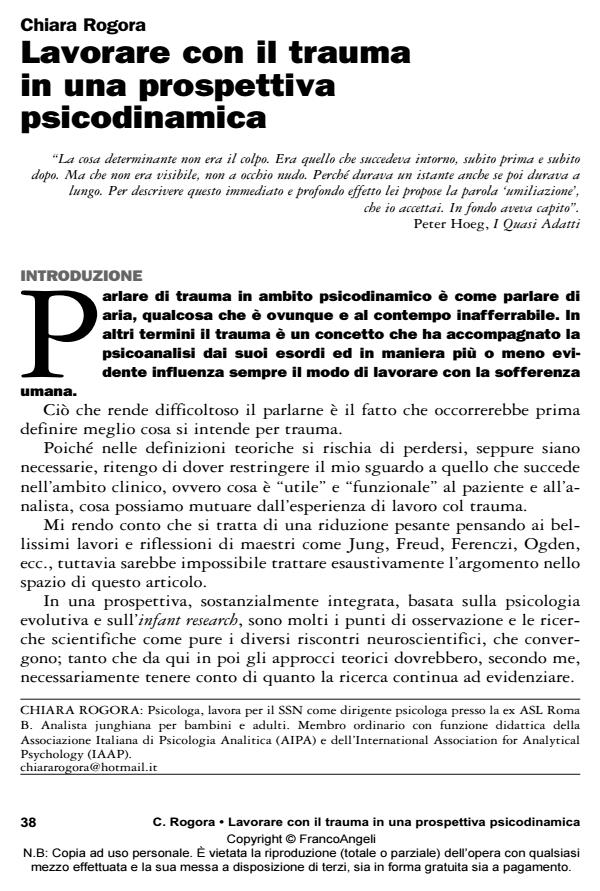Working with trauma in a psychodinamic prospective
Journal title PSICOBIETTIVO
Author/s Chiara Rogora
Publishing Year 2016 Issue 2016/1
Language Italian Pages 19 P. 38-56 File size 120 KB
DOI 10.3280/PSOB2016-001003
DOI is like a bar code for intellectual property: to have more infomation
click here
Below, you can see the article first page
If you want to buy this article in PDF format, you can do it, following the instructions to buy download credits

FrancoAngeli is member of Publishers International Linking Association, Inc (PILA), a not-for-profit association which run the CrossRef service enabling links to and from online scholarly content.
In this article the author addresses trauma from a psychoanalytic point of view, taking into account studies of developmental psychology and neuroscience discoveries, which promote a paradigm shift in modern psychopathology and in therapy with trauma being a centralized issue to be considered. More precisely, the early relational traumas, as well as silent and cumulative trauma during development, are proposed to be the main causes of damaging relational capacity of the child. Trauma, attachment, and neuroscience are redefining in a psychodynamic perspective, not only in regards to the theoretical frame but also and particularly in regards to the analytic alignment, the relation where it becomes the therapeutic factor and deserves to be at the center of the analyst’s attention. In the case of trauma related disorders, the implicit components of the analytic relation of the analyst are shaped on the patient’s needs as much as possible. Finally, a clinical case presentation will show the author’s way to interpret this new psychodynamic approach.
Keywords: Trauma; Attachment; Neuroscience; Relational Trauma; Dissociation
Chiara Rogora, Lavorare con il trauma in una prospettiva psicodinamica in "PSICOBIETTIVO" 1/2016, pp 38-56, DOI: 10.3280/PSOB2016-001003